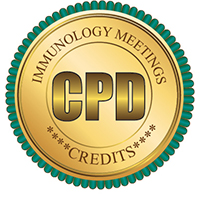Yung-Hua Li
Doctorate, University of Manitoba
Title: Inactivation of the BceABRS Four-Component System Attenuates the Ability of Streptococcus mutans to Survive in Human Blood and Reduces its Cariogenic Potential in A Rat Caries Model
Biography
Biography: Yung-Hua Li
Abstract
Streptococcus mutans is a primary etiological agent of dental caries worldwide. This bacterium may promote systemic infections, such as infective endocarditis, after gaining access to bloodstream or bacteremia. We previously characterized a four-component system, BceABRS, which is essential for cell envelope stress response and required for biofilm formation and fitness of S. mutans. In this study, we provide evidence that the BceABRS system of S. mutans is also required for its survival in human blood and cariogenic potential in a rat caries model. An ex vivo blood survival assay revealed that a deletion of bceA, bceB, bceR or bceS resulted in a mutant that showed a reduced survival rate in blood compared with their parent strain, S. mutans UA159. Introducing a wild copy of each of these genes into the mutants in trans increased the survival rates of these strains in blood. Luciferase reporter assay showed that human serum induced transcription of the bceABRS operon at a level similar to that by a physiological concentration of innate defense peptides, such as α-defensin-1 or b-defensin-3. Animal studies showed that all the BceABRS-deficient mutants had significantly reduced abilities for oral colonization and potential for initiation of dental caries based on mean caries scores from the animals: 30.5 ± 7.2 for ΔbceA, 28.8 ± 6.8 for ΔbceB, 30.2 ± 7.4 for ΔbceR and 30.8 ± 6.5 for ΔbceS compared with their parent UA159 (56.6 ± 7.8) (P ≤ 0.01-0.005). In conclusion, the BceABRS system in S. mutans is required for its survival in human blood and cariogenic potential in a rat caries model. Supported by CIHR grant MOP-115007 and by NSERC grant RGPIN 311682-07.

